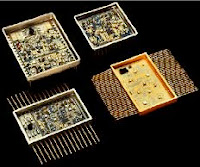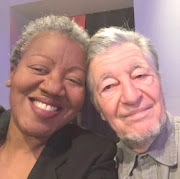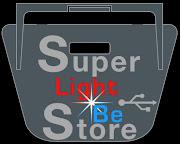In 1944, the ENIAC filled a 20 by 40 foot room, weighed 30 tons, and used more than 18,000 vacuum tubes (e.g. Radio Tubes).
- First computer I ever saw in 1960: the IBM 705 with with a lot of "radio tubes", magnetic tapes and punched cards. The computer's memory consisted of tiny ferrite cores strung on frameworks of fine wire.
- 1967 in a research lab: Digital Equipment PDP 5 and PDP 8 - Real Time Computing - CPU with 1K or 4K of Core Memory - Programs on Teletype tapes ! Analyzing, aggregating and displaying ionospheric wind patterns. Machine and Assembler Languages.
- 1968 in a research lab: IBM 1401 - variable word-length decimal computer - Computer for small businesses: high speed card punching and reading, magnetic tape, high speed printing, stored program, and arithmetic and logical ability - still a Core Memory. Hierarchical Database. Decoding, compiling and analyzing data transmitted by a ionospheric rocket. Assembler and Fortran Languages.
- 1969 with a computer manufacturer working in R&D for high-speed peripherals: IRIS 50. Siris 2 Operating System upward compatible with IBM OS/MFT, Memory was 256 K. Machine and Assembler Languages. Minicomputer CII 10010. Machine, Assembler, Pascal, Cobol Languages.
- 1970 working for the Census: IBM 360 and IBM 370: 256 K of RAM, JCL Control Cards, 7MB Disk Drive - MVS Operating System. Core Memory, then Transistor Memory and Hybrid Circuits. Clustering and statistical analysis of Census Data in correlation with Place of Work location. Cobol and PL1 Languages.
- 1981 working for a Government Agency: IBM AS 400 - Mid-range computer with Disk-Packs - Back-Panel - Transistor Memory - Integrated Circuits - Integrated Relational Database. Implementing an Office Network integrating over 200 Work Stations and a dozen Printers. Cobol Language.
- 1987 working for a Government Agency. The first Personal Computers - PC: IBM PC XT and AT, Apple II, Apple Macintosh with Mother-Board. Office Computing, Word Processing, Relational Databases. Pascal & Basic Languages.
- 1999 as a Management Consultant. The Laptops: Dell, Apple with Internet Modem Connection, DVD Drives. Office Work, Web Design. Various Software Packages.
- Since 2002, Management Consultants and Developers of N-Tier Dynamic Web-centric systems. Desktop and a Small Business Wireless Network to link all the hardware: iMac - Time Capsule - Wi-Fi Network - Wi-Fi Printers - Fiber Router. Various Software Packages.
The Bottom Line:
On the surface a lot of changes. The computer are becoming more powerful on an exponential scale and their size has shrunk on an exponential scale... but it is still based TODAY on the principle of the Turing Machine and Boolean Algebra.
A Turing Machine, as described in 1937, is a theoretical device that manipulates symbols on a strip of tape according to a table of rules. Despite its simplicity, a Turing machine can be adapted to simulate the logic of any computer algorithm, and is particularly useful in explaining the functions of a CPU inside a computer.
It is based on the Boolean Algebra, an algebra of two values. These are usually taken to be 0 and 1. The Boolean Algebra was developed by George Boole in the 1840's.
So, the fundamental principles of computing are still based on 1840's and 1937 science and principles.
What is next?
More miniaturization, faster devices, more integration of computing, communications, telephones, machines, control in the houses (Intelligent Home).... lower prices... and easier to use (voice interface, etc.).
The Smart-Phones such as the iPhone are really computers that are 100,000 more powerful than the ENIAC computer at the top of this Blog, and they fit in your pocket.
In the next few years we will witness a profound transformation of our living and working environment where the distinction between computers, phones, TVs and electronic devices will be blurred and will eventually totally disappear.
In a next BLOG we will address the changes in Software, Communications, Internet and Web we have witnessed over the last few years.





































No comments :
Post a Comment